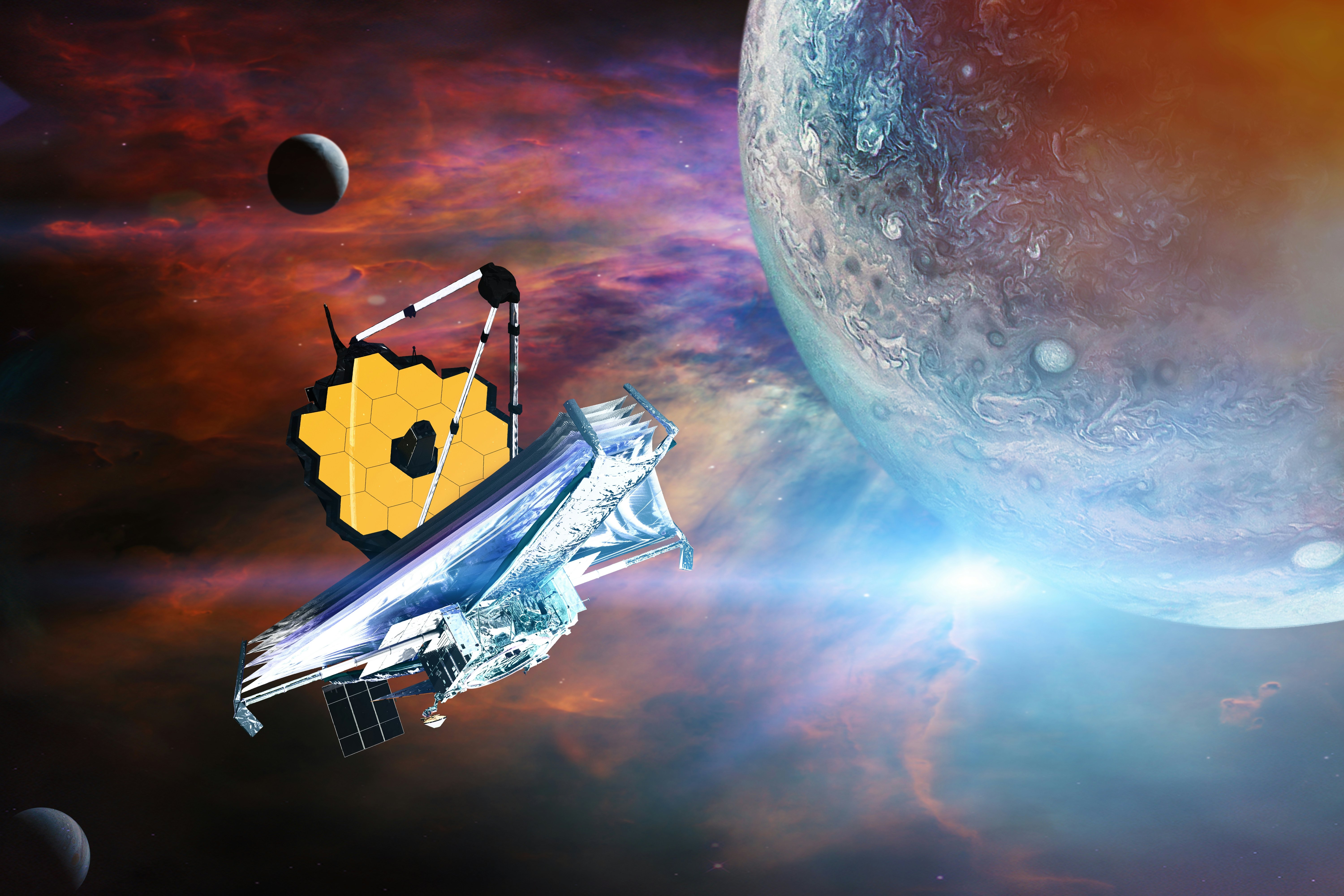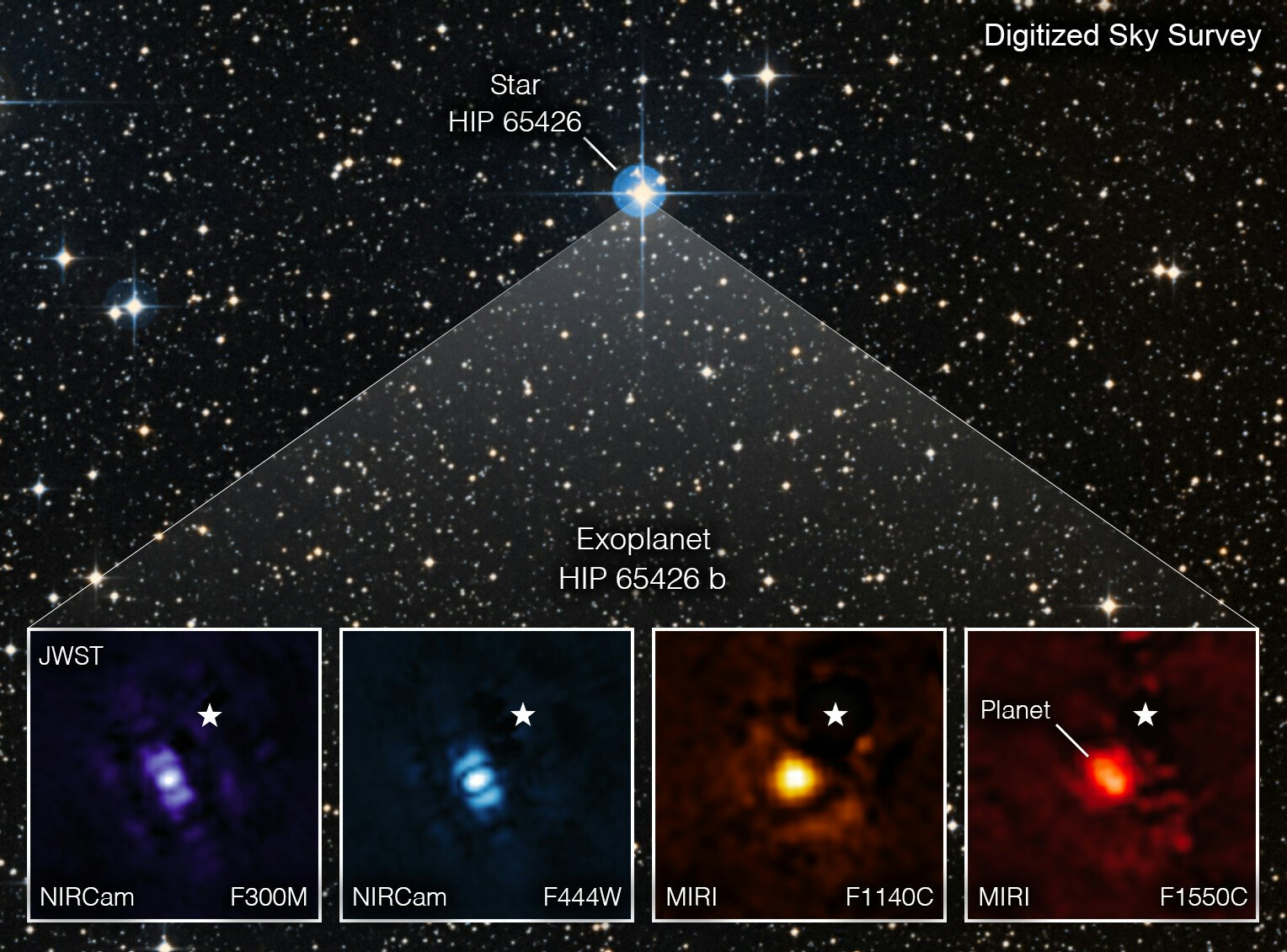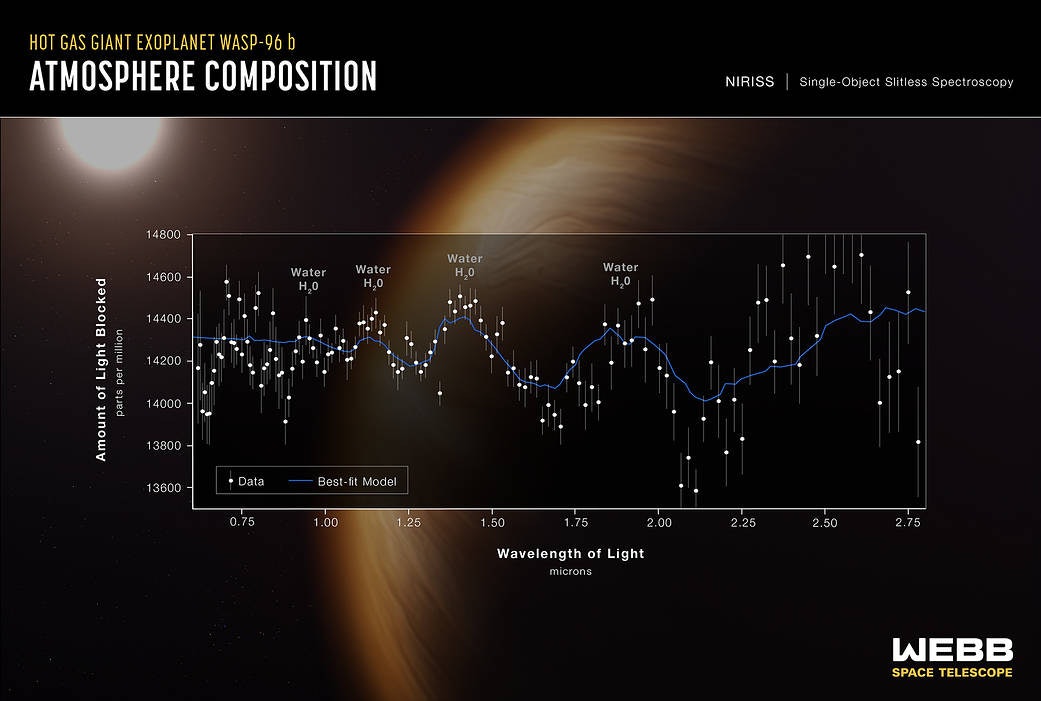
Long before its launch last December, the James Webb Space Telescope was hailed as the telescope that would show us distant worlds in unprecedented detail.
Today, it’s starting to live up to that promise with its first batch of exoplanet images, showing us a distant — and probably very cold — gas giant. The images are less visually breathtaking than some of Webb’s previous image releases, but the information they contain, and the possibilities they represent, are even more incredible.
What’s New – A team of astronomers led by Sasha Hinkley of the University of Exeter used two of Webb’s instruments, MIRI and NIRCam, to capture images of a gas giant called HIP 65426 b, which orbits a star 349 light years away from our Solar System. Thanks to Webb’s images and data, we now know that HIP 65426 b is about 7.1 times more massive than Jupiter.
Hinkley and his colleagues used four different filters to photograph the exoplanet in different wavelengths of infrared light. Thanks to slight differences in the optics of each filter, the blob of light that is a distant gas giant is shaped a bit differently in each image.

Because it’s a gas giant, HIP 65426 b isn’t a habitable world, and it’s so far from its star that if it has moons, they’re unlikely to host life, either (although tidal heating means it’s not entirely impossible). The exoplanet orbits its star at a distance 100 times greater than the distance between Earth and the Sun.
That’s 20 times farther out than Jupiter, and about 2.5 times farther than Pluto. The closest comparison in our Solar System is the dwarf planet Sedna, way out in the icy reaches of the Kuiper Belt 90 times father from the Sun than Earth. Imagine Sedna — cold and distant from its star — as a gas giant, and you have an idea of what HIP 65426 b might be like.
For astronomers here on Earth, the distance between the gas giant and its star make the planet easier to see and study. At greater distances, it’s easier for telescopes like Webb, and the pipelines of data processing software that turn their data into images we can actually see, to separate the light of an exoplanet from the much, much brighter light of its host star.
Coronagraphs — filters that block out starlight — also help Webb image exoplanets like HIP 65426 b, which is several thousand times fainter than its star in the mid-infrared and near-infrared wavelengths.
And the result is Webb’s first image of an exoplanet. A spectrum of light measured from another exoplanet, WASP-96 b, was one of the first Webb observations released to the public in July, but that didn’t include an actual picture of the planet. With HIP 65426 b, we get actual images, albeit somewhat blobby ones.
Here’s The Background — Astronomers discovered HIP 65426 b in 2017, and they took some lower-resolution infrared photos with the creatively-named Very Large Telescope (based here on Earth, in the Atacama Desert of northern Chile). But Webb’s more sensitive instruments, and its viewpoint well above the warm infrared glow of Earth’s atmosphere, means the newly-captured images reveal much more detail about the distant gas giant.
The images also reveal that Webb is working even better than its designers had hoped, according to Hinkley and his colleagues. When looking at exoplanets like HIP 65426 b, Webb seems to be about 10 times more sensitive than astronomers expected.
“The primary driver for these improvements is likely the improvement in the overall optical and stability performance of JWST compared to expectations,” Hinkley and his colleagues write in a paper which they’re submitting for peer review. In other words, now that Webb is actually in space, it’s more stable and focusing better than simulations here on Earth had predicted, and that means it can provide a sharper, more detailed view of the universe.

Why It Matters — If we want to learn more about exoplanet atmospheres, we have two options (for now).
First, astronomers can look at planets that orbit very close to small, dim stars called red dwarfs. As the planet passes in front of its host star, telescopes like Webb can measure how the spectrum of light coming from the star changes, which can reveal information about the chemical makeup of the exoplanet’s atmosphere. A handful of research teams already have time scheduled on James Webb to do exactly this, including with several rocky, Earthlike worlds that orbit in the habitable zone of a red dwarf star called TRAPPIST-1.
Second, astronomers can capture actual images and spectra of large exoplanets that orbit very far away from their host stars, like HIP 65426 b. Planets like this one are very unlikely to host life, but they can shed light on how planetary systems form and evolve.
Distant gas giants are, as Hinkley and his colleagues explain, “easier to detect at younger ages, where they are less likely to have experienced significant migration or accretion.”
In our own Solar System, it’s very likely that Jupiter formed farther out from the Sun than it is now, then migrated inward to somewhere around Mars’ current orbit — and then changed course to drift back out to its current spot.
But our Solar System is about 4.5 billion years old, while HIP 65426 b and its host star are only 15 or 20 million years old. Looking at HIP 65426 b is a little like looking at Jupiter before it migrated (and nudged the rest of the Solar System around in the process).
What’s Next – Hinkley and his colleagues are also imaging several other systems with Webb. And in the paper they recently submitted for publication, Hinkley and his colleagues described not only what Webb’s images revealed about one distant gas giant, but what the process taught them about the telescope’s capabilities and how astronomers can get the most out of it for this particular type of observation. That, as much as actually studying HIP 65426 b, was the purpose of their study, which was part of Webb’s Early Release Science (ERS) program.
That means that future exoplanet observations will benefit from what Hinkley and his colleagues learned, from best observing practices to data processing. They’ll also have a better idea of Webb’s actual capabilities, so we may see more ambitious images in the future.
“The study of exoplanet atmospheres continues to advance towards smaller and more Earth-like exoplanets, and could ultimately lead to the discovery of life outside our Solar System,” write Hinkley and his colleagues.







